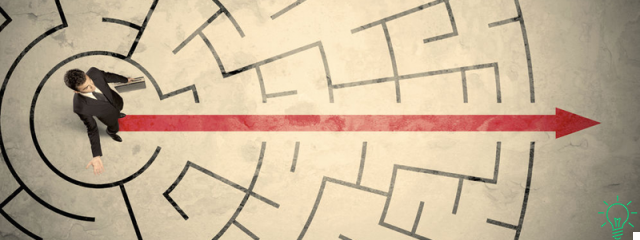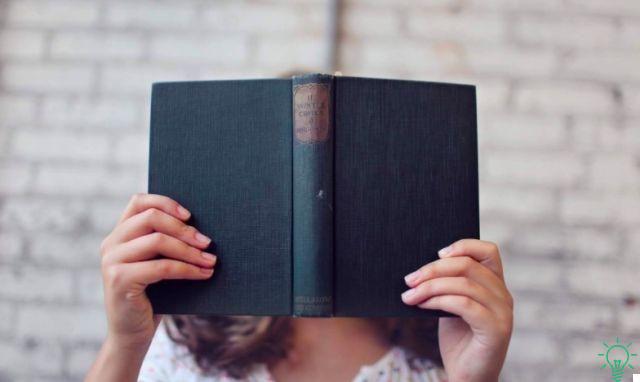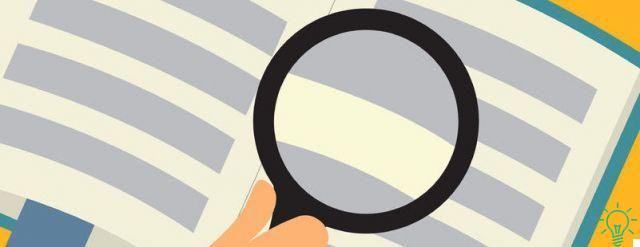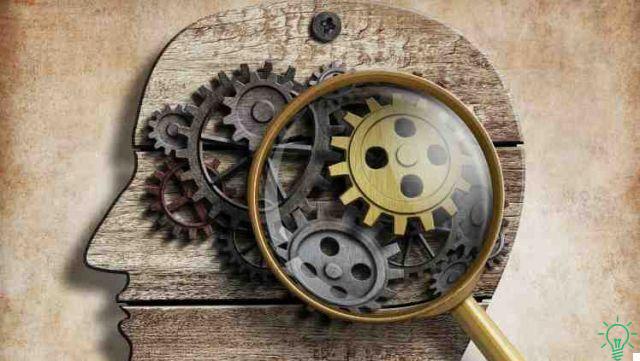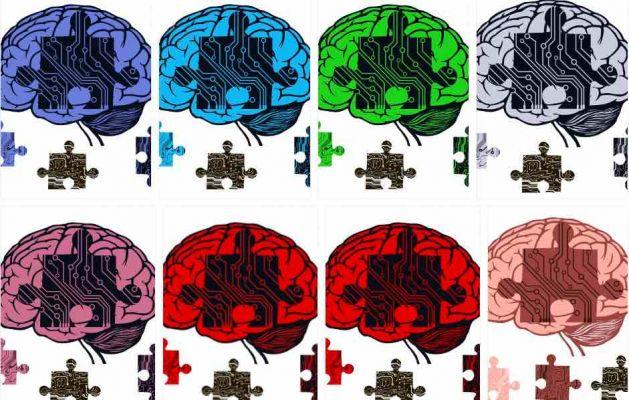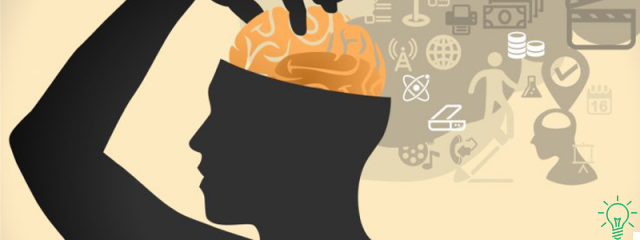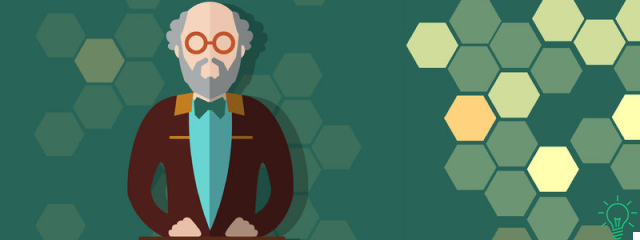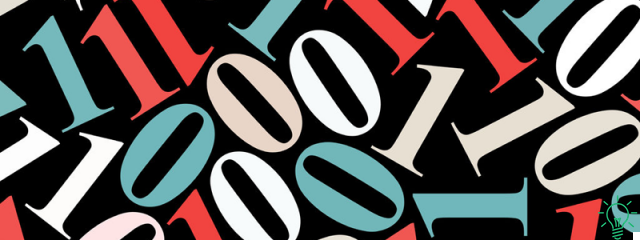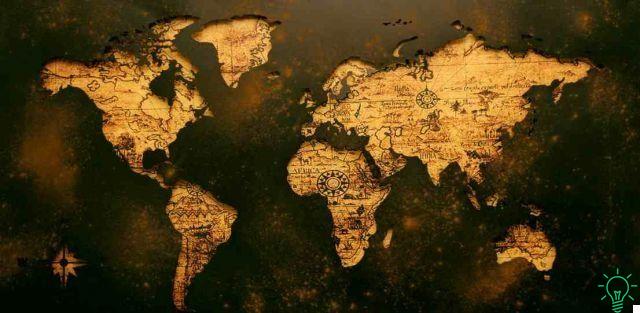
Just in these days more than one reader of the GetPersonalGrowth blog wrote to me because he doubts he doesn't have enough loci to study….
And in fact it is a typical doubt of those who begin to use the technique of loci for the first time.
I then asked Raffaele, who as a medical student grinds thousands of Loci at each exam session, to explain some of his techniques to multiply them infinitely thanks to technology.
It will be like an exciting journey, in which you will start from Google Street View to get to virtual and mixed reality!
And, as always when it comes to technology, Raffaele will involve you without giving you a breather!
In addition to this if you feel like reading quite a bit (it's an article of over 12 words!), You can also look at my example on how to memorize the books of the old testament, in which I explain some traditional methods to increase the Loci.
But now, the word to Raffaele.
Loci Infiniti
I start with an important premise: the number of loci is infinite! We can use any street, any room, any place present in our memories (and even just imagined) to place mental images.
Just as we can also segment the same locus into several parts: your desk can, for example, host images on the left side, in the center, on the right side and even under the table.
And each of these things becomes the male "hook" on which to attach new information.
For Pharmacology 1 for example, only with my lamp, one of the 100 objects I have in the room, I identified 5 portions:
- The light bulb
- The stem (that long tube that connects it to the base)
- La base
- The switch
- The socket connected to the mains
Each well identified, precise, very clear in my mind. Just like a good locus must be.
It is clear that by doing the same for each locus, there is really a lot of space.
But this method also has contraindications, let's see why!
Segmenting too much can be counterproductive
If like me, you are not yet a master of memory, and are gaining experience, segmenting the loci too much can be very confusing.
In fact, you may have to spend a lot of time reinforcing weak images because you risk viewing an image in the wrong locus, if it is only a few centimeters away from the original.
With subsequent repetitions, errors decrease. But the most logical way to solve this problem from the start would be to:
- spend much more time visualizing the loci
- notice more details
- thus creating very strong images right from the start.
If you are a high level mnemonist it will be more immediate and faster.
But if you are still learning, especially for complex subjects full of terms and classifications, a memory palace organized in this way will require considerable effort and time.
If you want to get an idea of the difficulties I encountered in memorizing Pharmacology 1 with this method, Anthony has posted our email exchange, which I absolutely recommend you read.
If you are not a medical student you will have more difficulty following the speech, but it will still be useful because it is a real comparison, done off the cuff, of the problems that students encounter.
For the study of Pharmacology 2, I instead decided to use a different approach, using many more clearly and distinct loci, avoiding overlapping images, and the results were decidedly better, but another problem arose: where do I find new loci?
Do we really know a few loci?
The answer to this question is obviously NO; being able to use any place we can think of, we should have an unlimited number of loci!
So why are we having difficulties?
Because we don't pay attention to what's around us, even if we have it under our eyes every single day.
For example, I wanted to use the road that connects my house to the supermarket for my building, but I had difficulty remembering some passages, doesn't it seem incredible to you?
Let's do an experiment, without going to check your wallet, could you describe the architectural elements on the front and back of the 5, 10, 20 and 50 euro banknotes?
We all handle money on a daily basis, yet we have never really observed it. For example, I only remember the image of Maria Montessori on the now outdated one thousand lire banknote.
(On why the brain is so economical with its attention resources, a whole book could be written. But you can also settle for the article on how to improve concentration that you find here on the blog)
The same thing happens for places we think we know well.
To reinforce the memory, and to study the details, the best thing would be walk observing them more carefully. But if we don't have time or desire (maybe it's cold outside, or it's raining, or the place to reach is too far), how to do it? Fortunately, technology comes to our aid.
Google Street View e Cicerone
The idea of using Google Street View is not new, even if it is not very widespread; however, speaking with some memory "athlete", he will tell you that it is a practice used in America.
What is Google Street View? For the uninitiated, it is a technology present in Google Maps and Google Earth that provides a panoramic view of many roads around the world.
Fortunately, Google Street View does not just give us a 360 ° view of the streets, but also of museums and various wonders of the Earth.
Without leaving our home we can explore the Ferrari museum in Maranello, the archaeological park of Vulci (ancient Etruscan city), Rio de Janeiro, Machu Picchu, football stadiums, Mexican universities, Venice and much more.
Let's now pass to deepen Google Earth; I suggest you click on this link to watch a very short introductory video.
As you can guess from the name, it was designed with the aim of allowing us to explore our planet, but now the mode has been introduced Travel, a series of guided tours around the world run by very important companies, such as BBC Earth.
Spoiled for choice!
Don't you know which place on Earth to go to virtually visit to place your mental images there? Very well, there is the option "I'm feeling lucky”Which will make Google decide where to take you.
To this is added the collaboration with Wikipedia , which will provide information of a historical-artistic nature, but not only.
It may seem like a waste of time if you have an urgent need to memorize, and actually you could explore a place close to you, which you may have already visited once, to reinforce a partial memory you already have, but you could also take advantage of the opportunity to expand yours. cultural horizons.
If you have read Anthony Elle's articles in the "Memory techniques" section, you will surely know that it is much easier to remember something that has many links to other memories: if the information is isolated, it will be difficult to retrieve it, if instead we have many related notions , our memory works better.
With this in mind, you might like the "Knowledge Cards"Of Google Earth that associate an image (eg the Eiffel Tower) with short, meaningful information taken from Wikipedia (eg" The Eiffel Tower is a tubular wrought iron tower that rises on the Champ de Mars, in Paris, France " ) and are very reminiscent of Flashcards.
The map can be viewed in 2D, but there is also the version in 3D with the ability to rotate a 360 ° the image as if you were on a drone.
Is this method practical?
Absolutely yes!
While I was designing my computer memory building, and noting the various mental images, I made a lot of use: I opened a browser tab, I went to Google Maps, I selected the street, I opened Street View and walked it piece by piece in a few seconds. .
As previously said, if you are in a hurry, you should take advantage of places you already know briefly; I also advise you to take advantage of the "zoom" function to fix some details of the street you are traveling on and the important elements, and often change the perspective of the scene (which fortunately this technology allows us to do).
If, on the other hand, you are tempted by the idea of memorizing completely new and particular loci to have them ready in the future, there is an article from GetPersonalGrowth of Memory that you should read about visual memory.
Advanced technologies to increase the number of loci
If what you just read doesn't seem like enough, there are additional technologies you can take advantage of; you will lose some practicality and time needed to learn the loci, but you will gain some in strength of mental associations, and why not, also in fun (which is a component not to be underestimated in learning).
Google SketchUp
With Google SketchUp you will be able to quickly and easily CREATE 3D models (or take ready-made and easily available templates) so you can build a house or a building from scratch or whatever you want.
Pros: infinite loci, great customization; by creating the loci yourself, you will better remember the arrangement of objects.
Cons: a little more time-consuming, it takes some practice to learn how to use it
Virtual Reality (VR)
By virtual reality, we mean a simulated reality, in which it is possible to interact with objects present in photorealistic settings in real time.
We have often heard of it for video games (Playstation VR, Samsung Gear VR) which are one of the main applications, but not the only one!
For example, we can use Google Street View with a virtual reality viewer and be immersed in a new environment, and be able to explore it at 360 °.
Try virtual reality with a few euros
Considering that more or less professional solutions require huge investments, it is also possible to buy a headset for a few euros and use our smartphone as a screen.
On the internet you can find viewers of all prices, from the cheapest cardboard ones like the Google Cardboard, to plastic ones around 15-30 euros. Even taking a tour on Amazon, you will find several, but also in the stalls at the village festivals.
I leave you the link of a demonstration video of how to use Google Street View at 360 ° with one of these viewers and a smartphone (alternatively you can always use a mobile phone or tablet and still have a complete view, without feeling immersed)
Mixed Reality (MR)
La Mixed Reality mix physical reality with virtual reality: through the camera, your device (eg smartphone or tablet) frames the outside world, and you can add virtual objects, making them interact with your environment.
The technology is not yet mature to be fully exploited for the use of memory techniques; for now Ikea has implemented it (quite well) allowing you to test the furniture to buy in your apartment, positioning them as you wish, and soon Amazon in the USA will allow you to virtually place objects in the online store, in the environment you prefer.
It will not be something immediate and accessible to all devices, but keep up to date, soon you will have an extra help from the technology for the creation of your mental images.
If you have trouble imagining a scene in your memory palace, you can ask mixed reality for help;)
And now, I'm giving Anthony the floor again
Technology at the service of memory and study
We have already seen it several times: technology is a very powerful means to study and memorize faster and better.
But not only, as might be expected, for "mechanical" facts, such as:
- take notes or study faster with an app
- build flahscard decks with Anki
- use tablet to organize tons of written material
- learn accents in a foreign language
or more.
Technology, just as Raffaele told us today, can go much further.
In particular, it can help the right hemisphere to better carry out his work of creativity and imagination, pushing him to immerse himself in new worlds, more or less real, in which to build real learning experiences.
It is a truly indispensable job:
- If you want to use memory techniques to the fullest
- If you want to transform the passive experience of studying into an active experience, with a high creative rate
Because you see, in particular about this second aspect, nobody ever thinks about it.
Everyone wants to learn memory techniques to study faster and that's it.
But what if they made you even happier studying?
A greeting. Anthony and Raffaele.






